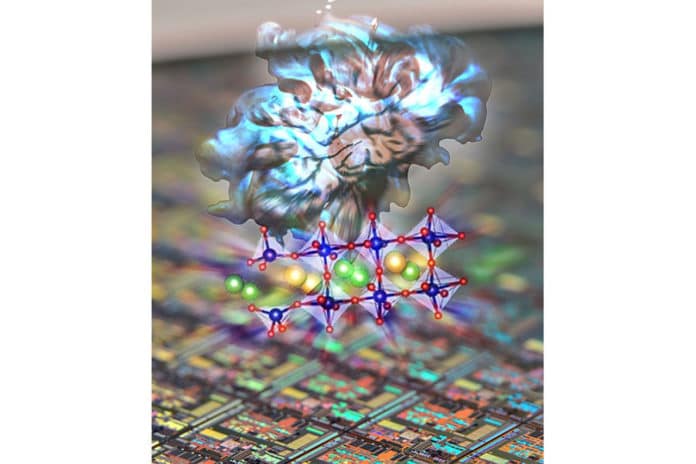In the last decade, the new paradigm of neuromorphic computing has emerged. Neuromorphic computing implements aspects of biological neural networks as analog or digital copies on electronic circuits. This approach’s goal is twofold: Offering a tool for neuroscience to understand the dynamic processes of learning and development in the brain and applying brain inspiration to generic cognitive computing.
To make devices that imitate what happens in our brain’s neurons and synapses, specialists need to overcome a fundamental molecular engineering challenge: designing devices that display controllable and energy-efficient transition between different resistive states triggered by incoming stimuli.
In a recent study, scientists at the Pritzker School of Molecular Engineering (PME) at the University of Chicago predicted design rules for such devices. They predicted new ways of engineering and triggering changes in electronic properties in several classes of transition metal oxides, which could be used to form the basis of neuromorphic computing architectures.
Giulia Galli, Liew Family Professor at Pritzker Molecular Engineering, said, “We used quantum mechanical calculations to unravel the mechanism of the transition, highlighting exactly how it happens at the atomistic scale. We further devised a model to predict how to trigger the transition, showing good agreement with available measurements.”
Scientists further demonstrated oxide materials that exhibit a change of electronic properties from a metal—which conducts electricity—to an insulator—which does not allow electricity to pass through—with various concentrations of defects.
How did the defects change the state of the material from a metal to an insulator?
To find out the answer, scientists calculated the electronic structure at different defect concentrations using quantum mechanics methods.
Shenli Zhang, a UChicago postdoctoral researcher and first author of the paper, said, “Understanding the intricate interdependency of the charge of these defects, the way atoms rearrange in the material, and the way spin properties vary is crucial to controlling and eventually triggering the desired transition.”
“Compared to traditional semiconductors, the oxide materials we studied require much less energy to switch between two different states: from a metal to an insulator. This feature makes these materials promising candidates to be used as artificial neurons or artificial synapses for large-scale neuromorphic architectures.”
The study, published by Zhang and Galli, was conducted within the Quantum Materials for Energy-Efficient Neuromorphic Computing (QMEENC) research center funded by the Department of Energy led by Prof. Ivan Schuller at UC San Diego.
Journal Reference:
- Shenli Zhang et al., Understanding the metal-to-insulator transition in La1−xSrxCoO3−δ and its applications for neuromorphic computing, npj Computational Materials (2020). DOI: 10.1038/s41524-020-00437-w
